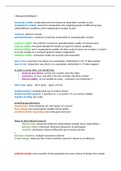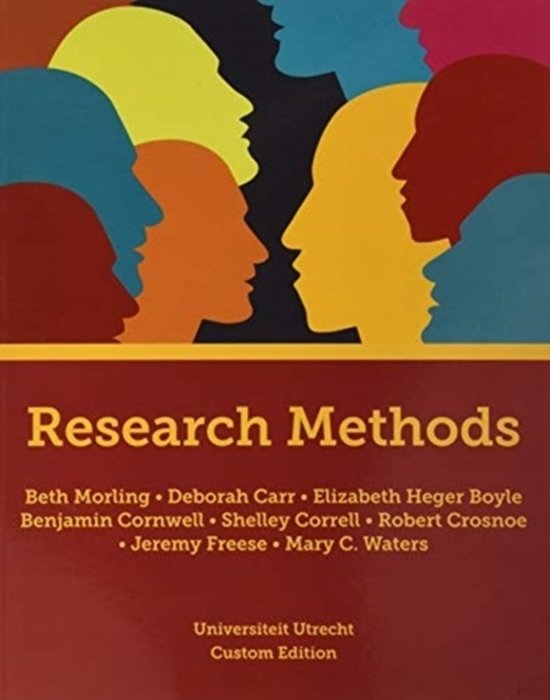Research Methods
measured variable: simply observed and measured, dependent variable (y axis)
manipulated variable: researcher manipulates it by assigning people to different groups,
called different conditions of the independent variable (x axis)
construct: abstract concept
operationalization: construct turned into measurable or manipulatable variable
construct validity: how well the construct is operationalized, quality of measurement
external validity: how generalizable the results are (good if random sampling)
internal validity: only 1 manipulated variable, all other control factors are constant , so there
is no 3rd variable as a confound (good if random assignment)
statistical validity: conclusions made are accurate and reasonable
type I error: researcher says there is an association, whilst there is not false positive
type II error: researchers says there is no association, whilst there is false negative
to make a causal claim, one should have:
temporal precedence: so first one variable, then the other
covariance: of cause and effect, the two variables should be related
internal validity: no 3rd variable as cause – confound, very important !!
Likert scale: agree – don’t agree – agree a bit etc.
leading question: wording leads you to certain answer
double-barrelled question: 2 questions in 1, so unclear no construct validity
negative wording: just sucks
answering questionnaires
acquiescence: only answering ‘yes’ and ‘agree’ on a survey
fence sitting: only answering the middle neutral option
socially desirable responding: tryna look good and smart
biases in observational research
observer bias: researcher interprets observations wrongly due to expectations
observer effects: researcher influences behaviour of participants
reactivity: participants behave differently due to being watched
↓
interrater reliability: multiple researchers observe
masked design: observers don’t know what the research is about so no influence
unbiased sample: every member of the population has same chance of being in the sample





